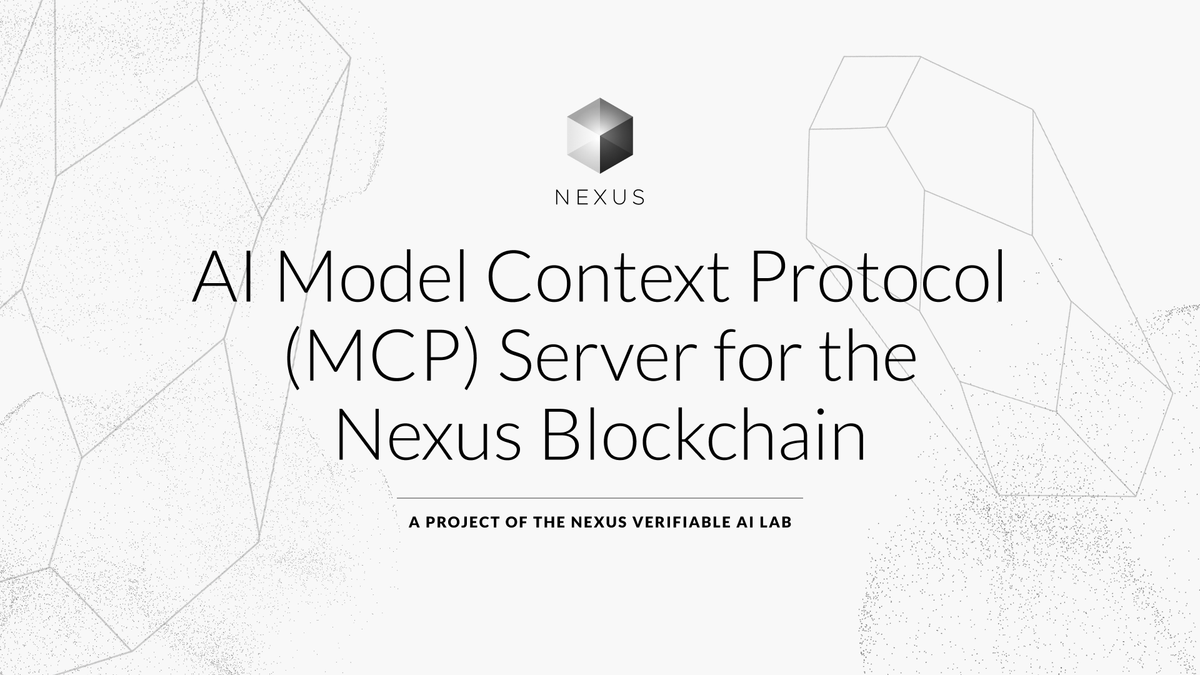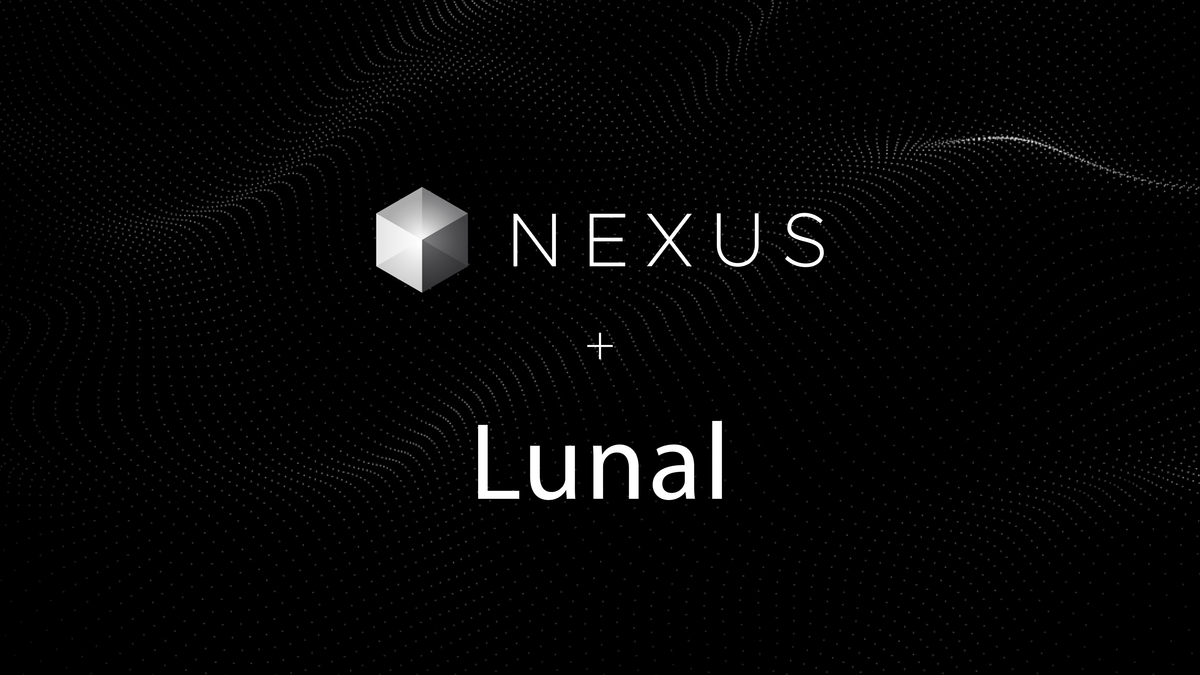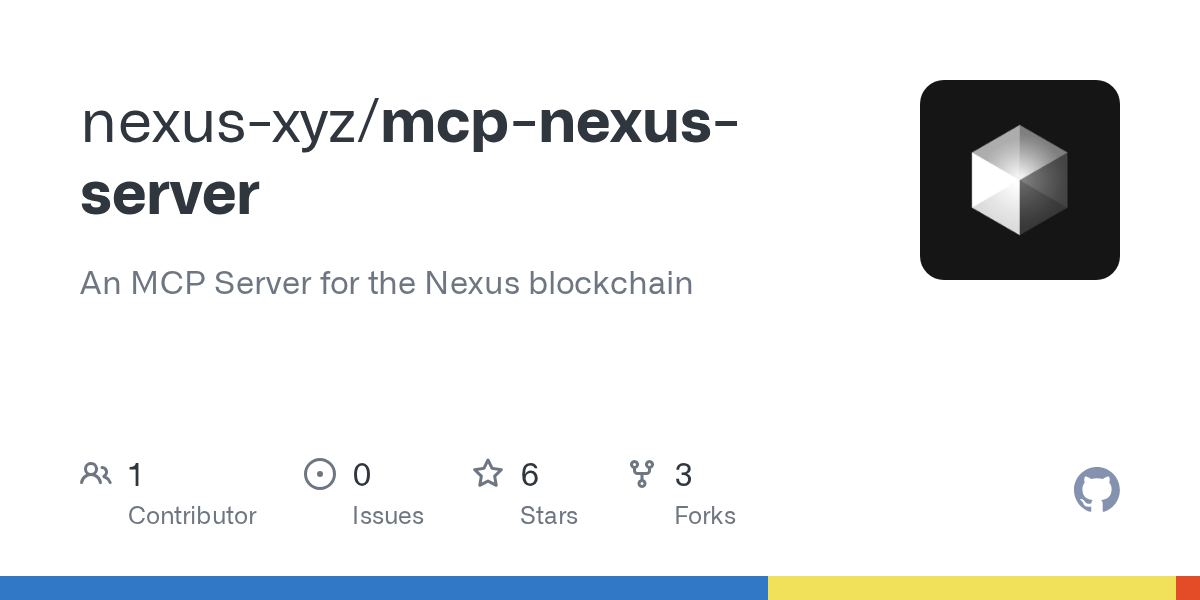Community Report: Looking Ahead to 2026
Happy New Year to the Nexus community! As we step into 2026, we’re excited to kick off a strong

The convergence of AI and blockchain is reshaping the fabric of the internet. At Nexus, we’re building the infrastructure to make that convergence verifiable, scalable, and usable by machines. A key part of that infrastructure is MCP server support, which lets AI agents read and write directly to blockchain networks.
In this guide, we’ll walk through what MCP is, why it matters, and how developers can start using the Nexus MCP Server to build AI-native apps that read from and write to blockchain.
Until now, AI agents have mostly played a passive role in Web3 — analyzing onchain data, summarizing wallet activity, or offering portfolio advice. But true autonomy requires action.
The problem? Most AI systems can’t speak blockchain.
That’s where the Model Context Protocol (MCP) comes in. MCP is a new open standard for enabling AI agents, like Anthropic’s Claude or other LLM-based tools, to interact with external APIs, tools, and data sources. It acts as a connective tissue between an agent’s reasoning engine and the digital infrastructure around it.
By bringing MCP to Nexus, we makes it possible for AI agents to:
In short, Nexus gives AI agents read/write access to the blockchain — securely and verifiably.

The Nexus MCP Server acts as a bridge between AI agents and the Nexus blockchain. It translates high-level AI requests into low-level JSON-RPC calls that the blockchain can understand, and vice versa.
Here’s what it enables out of the box:
getNetworkInfo – fetch blockchain statusgetBalance – retrieve wallet balancesgetTransaction, getBlock – explore on-chain activitycallContract – make read-only calls to smart contractssendRawTransaction – broadcast signed transactionsgetLogs – subscribe to events or filtersImportantly, the server follows the MCP standard — meaning any compliant AI agent can plug in and begin transacting without writing custom glue code.
We have worked with our partner Lunal to create a TEE-based Nexus MCP server, for private, verifiable and secure interaction with Nexus through AI agents.

The Nexus MCP Server is designed to be both developer-friendly and production-ready. It builds on modern web infrastructure and integrates tightly with blockchain RPC systems to deliver a reliable, extensible interface between AI agents and the Nexus blockchain.
At its core, the server performs translation between MCP protocol messages and Ethereum-compatible JSON-RPC calls, allowing AI agents to access and interact with blockchain using a familiar, standardized interface.

The server uses Next.js as its framework, chosen for its flexibility and robust support for serverless deployments. Each tool exposed to MCP — such as getBalance or getTransaction — is implemented as a typed endpoint using route handlers. This makes it easy to define new tools or extend existing ones.
To implement the MCP protocol itself, Nexus uses the @vercel/mcp-adapter package. This adapter handles the complexity of session management, transport protocol negotiation, message validation, and tool interface definitions. Each tool is defined using Zod schemas, providing type safety and automatic validation of arguments and return values.
To support real-time communication between AI agents and blockchain, the MCP Server includes a Server-Sent Events (SSE) transport mode. This is particularly important for operations that require continuous updates, such as monitoring block confirmations or listening for contract events.
This streaming capability is powered by Redis, which plays three roles:
Developers can choose whether to enable Redis depending on their deployment needs. For lightweight local development, Redis can be omitted, falling back to HTTP transport.
All blockchain interactions are routed through a dedicated RPC abstraction layer. This layer is responsible for formatting and sending JSON-RPC requests to the Nexus blockchain, handling errors, and returning structured results back to the AI agent.
This abstraction layer ensures that AI agents can safely access on-chain data and interact with smart contracts without being exposed to low-level implementation details.
With the MCP server in place, developers can build a wide variety of AI-native applications that not only observe but act on-chain. Some examples include:
These applications are no longer theoretical. The tooling now exists to begin prototyping and deploying these systems using Nexus and MCP.
The Nexus MCP Server is a foundational step toward a broader goal: enabling an AI-native financial infrastructure where intelligent agents can reason about, interact with, and shape onchain systems in real time.
In the months ahead, the Nexus team will expand the MCP server’s capabilities internally and alongside our partners, including:
These upgrades will make it easier for developers to build secure, autonomous agents that can operate reliably within decentralized ecosystems.
If you’re working at the intersection of AI and Web3 — or want to be — we invite you to explore the Nexus MCP server and begin building. You can get started with just a few commands.
Whether you’re prototyping agent infrastructure, deploying smart contract logic, or designing AI-first products, the Nexus platform provides the primitives you need to move fast and stay verifiable.